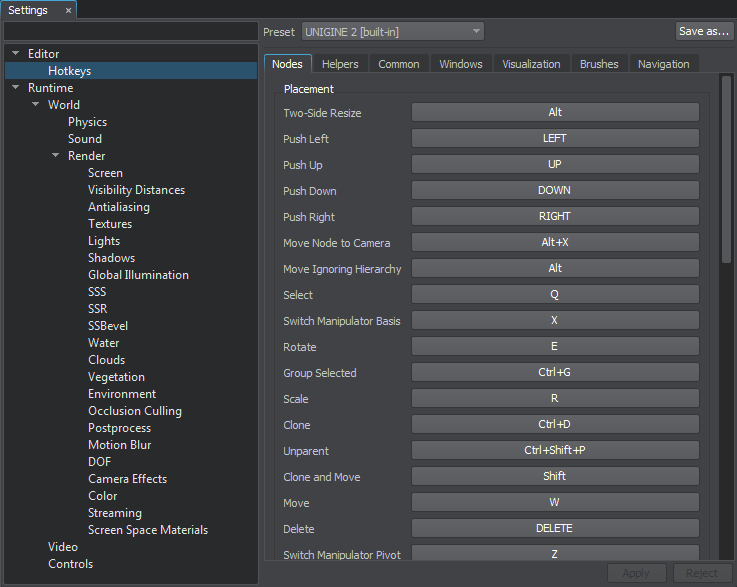Settings and Preferences
The Settings window provides quick access to general editor and run-time settings, including hotkeys and controls, general physics, sound, render and video settings.
To open the window, choose Window - > Settings in the main menu:

The following window will open:

Saving and Loading Settings#
Via the Settings window, you can save and load presets for general physics, sound and render settings. The presets are stored in files with the corresponding extensions: *.physics, *.sound, *.render.
By using this capability, you can prepare settings presets with low, medium, high and ultra settings for different devices.
To save the preset to a file:
- Go to the section with the required setting (Physics, Sound or Render) and click Save (to save changes to the current preset file) or Save As New (to save settings to a new file) in the upper right corner of the window.

- In the file dialog window that opens, specify a folder and a name for the preset file and click OK.
To load the preset from a file and apply it:
- Go to the section with the required setting (Physics, Sound or Render) and simply select the desired preset from the dropdown in the upper right corner of the window.

To revert your changes made to the preset simply click Revert after making them.

The previously saved settings will be loaded from the corresponding file and applied.
For your convenience there is also a [From World] option enabling you to use render, sound, and physics settings stored in a *.world file, that is currently loaded. If you change any settings when this option is selected, you can only save your changes to a new preset asset which will be automatically selected and applied.
